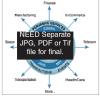The Latest
 |
Model Driven Architecture: It's Not Your Father's UML[magazine] Software engineering has come a long way, but programmers still spend a lot of time on tasks that could be automated. Fortunately, there's model driven architecture with its new generation of modeling tools that go way beyond the average UML. Learn how MDA addresses the challenges of today's highly networked, constantly changing systems environment and provides an architecture that assures portability, platform independence, productivity, and much more. |
Timothy Korson
December 29, 2005 |
|
Brushing Up on Functional Test Effectiveness[magazine] What does dental floss have to do with automated functional testing? More than you might think. Learn from one Agile practitioner how you can apply the tenets of good oral hygiene to your functional tests for requirements artifacts so effective they'll make you smile. |
||
|
Don't Wait, Innovate![presentation] Our test teams often struggle for so long ... to do so much ... with so little, and they usually manage to just squeak by. In the next cycle when asked to do even more with even less, they are likely to fail. |
Heath Newburn, IBM Global Services
|
|
|
Journey to Test Automation Maturity[presentation] Organizations that want to automate their testing generally go through a number of stages before they reach maturity. |
 Dorothy Graham, Grove Consultants
Dorothy Graham, Grove Consultants
|
|
|
STARWEST 2005: Interpersonal Skills for Working with Business Stakeholders[presentation] As a professional test manager or test engineer, you must keep up with the latest test techniques, management practices, and systems technologies. But that is not enough. |
 Robert Sabourin, AmiBug.com Inc
Robert Sabourin, AmiBug.com Inc
|
|
|
The Venerable Triangle Redux[presentation] Jerry Weinberg's venerable triangle problem has been around since 1966 and was popularized in Glenford Myers' book The Art of Software Testing. |
William Rollison, Microsoft Corporation
|
|
|
Risk: The Testers Favorite Four Letter Word[presentation] Identifying risk is important-but managing risk is vital. Good project managers speak the language of risk, and their understanding of risk guides important decisions. |
 Julie Gardiner, QST Consultants Ltd.
Julie Gardiner, QST Consultants Ltd.
|
|
|
It's 2005, Why Does Software Still Stink[presentation] We've now been writing software for an entire human generation. Yet software is arguably the least reliable product ever produced. |
 James Whittaker, Florida Institute of Technology
James Whittaker, Florida Institute of Technology
|
|
|
Release Management—Making It Lean and Agile[article] Release management is an awesome responsibility that plays a vital role in the success of a software development project. Releasing is often considered to be an activity that happens near the end of the process—a necessary evil, perhaps, but no more. |
||
|
Approaching Parallel Development with Branch - Merge Strategies[article] Many times when managers first consider parallel development, it appears to be a very effective way to manage changes to concurrent streams of development. This is somewhat true if the project uses an SCM technology that allows for stable branching and establishes discreet project and maintenance branches. However, what is often forgotten is that while branching is a great way to separate code changes, at some point merging will have to occur. This article provides guidance for approaching and performing parallel development. |
||
|
Helping Your Team Weather the Storm[article] Jim is mad at Hal. Sara is complaining to Jason. Hal feels hurt; Susan shows up late. Jason thinks only Sara and he have a clue. Is this team falling apart—or just experiencing a normal part of group development? In this column, Esther Derby describes what their team leader Jenny goes through as she learns about the predictable ups and downs of team formation and the one thing any team member can do to help. |
||
|
An Agile Perspective on Branching and Merging[article] This article focuses on branching and merging. We present some background for branching and merging, and consider some of the implications for agile development in particular. We also hope to reduce some of the suspicion that many agile developers have of branching. The article assumes some overall branching knowledge and yet revisits some particular details that often seem to confuse people. This is a fertile area which we will continue to expand on in future articles. |
||
|
Cases Against Applying Schedule Pressure[article] Do you think that by removing deadlines from a project a team will have enough time to create perfect software? Theoretically, it's possible, but in this column Mike Cohn explains that this theory might not hold against ingrained behavior. He recalls how several teams reacted when deadlines were lifted from the projects they were working on. Their only goal: to produce perfect software. But that goal inadvertently brought something to the surface, that old habits die hard. |
||
|
Todd Little - Agile 2005 - APLN and Agile 2005[article]
Podcast
Todd Little, one of the organizers of the Agile conference and a founding member of the APLN, talks during Agile 2005. |
||
|
More Than One Answer; More Than One Question[magazine] Connect with an expert to learn how to work smarter and discover new ways to uncover more defects. In this issue, Michael Bolton continues his discussion of James Bach's Heuristic Test Strategy Model by focusing on the importance of customer-facing quality criteria. |








